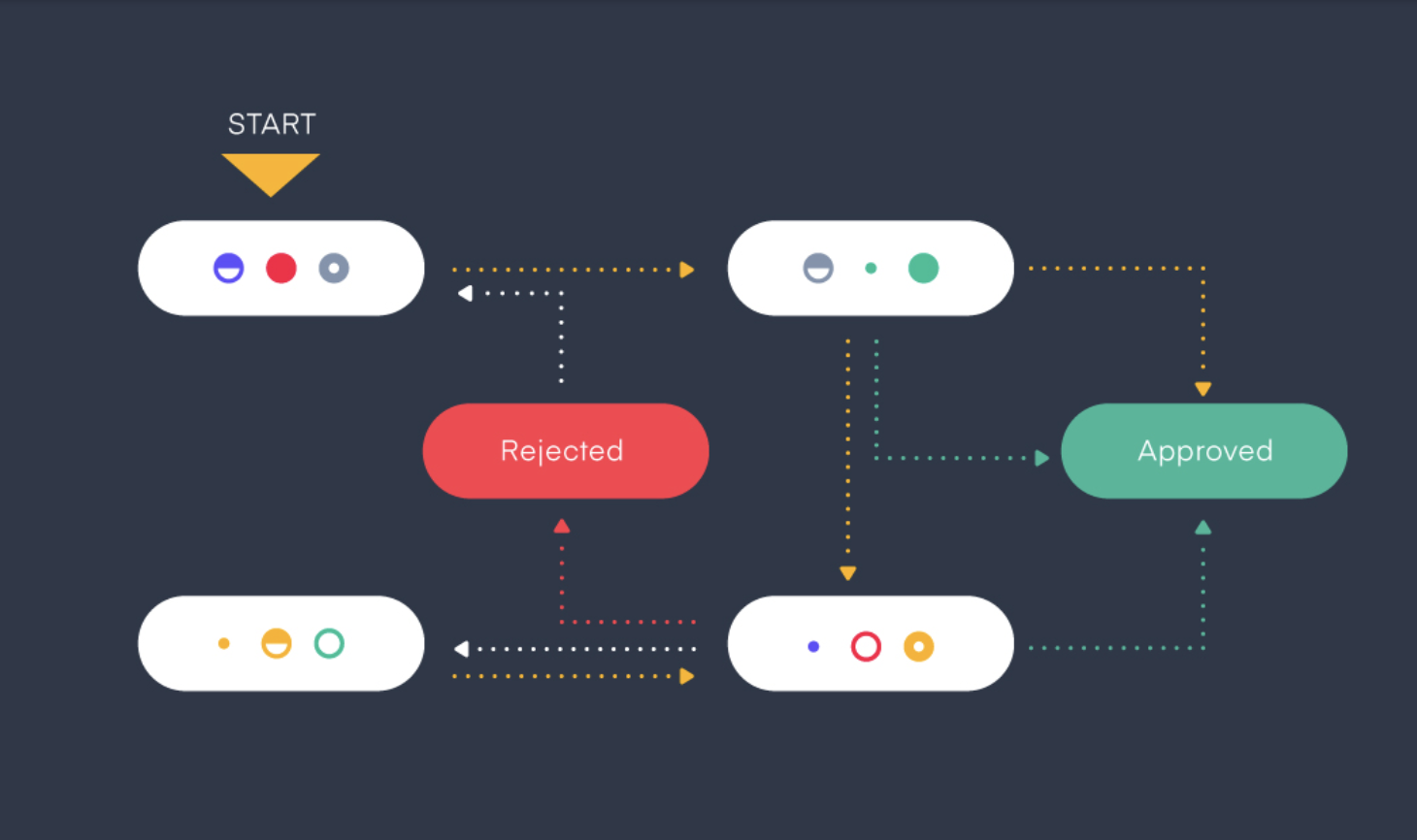
Mastering NetSuite’s SuiteFlow for Complex Business Processes
As businesses grow and evolve, their operational processes become increasingly complex, spanning multiple departments, systems, and stakeholders. Manually managing these processes can be time-consuming, error-prone, and inefficient, leading to delays, miscommunication, and lost productivity. This is where NetSuite’s SuiteFlow comes in – a powerful visual workflow tool that allows users to automate complex, multi-step processes across the entire organization.
In this comprehensive guide, we’ll dive deep into the capabilities of SuiteFlow, explore real-world use cases and examples, and provide step-by-step tutorials and best practices to help you master workflow automation in NetSuite. Whether you’re a business user looking to streamline a specific process or an administrator tasked with optimizing NetSuite for your organization, this guide will equip you with the knowledge and skills you need to leverage SuiteFlow to its fullest potential.
Understanding NetSuite SuiteFlow
Before we jump into creating workflows, let’s take a moment to understand what SuiteFlow is and how it works within the NetSuite ecosystem.
What is SuiteFlow?
SuiteFlow is a visual workflow automation tool that is fully integrated with NetSuite. It allows users to create custom workflows that automate complex, multi-step processes across different records, departments, and systems. With SuiteFlow, you can define triggers, conditions, and actions to route tasks, update records, send notifications, and more, all without writing a single line of code.
How does SuiteFlow work?
At its core, SuiteFlow is based on a state machine model. A workflow consists of a series of states, each representing a specific stage or condition in your process. States are connected by transitions, which define how the workflow moves from one state to another based on specific conditions and actions.
For example, let’s say you have a simple workflow for approving sales orders. The workflow might have the following states:
1. Pending Approval
2. Approved
3. Rejected
The transitions between these states would be:
1. Pending Approval to Approved: If the sales order is approved by a manager.
2. Pending Approval to Rejected: If the sales order is rejected by a manager.
Each transition can have one or more conditions that determine whether the transition should be followed, as well as actions that are executed when the transition occurs (e.g., updating a field, sending an email, creating a task).
Why use SuiteFlow?
There are many benefits to using SuiteFlow to automate your business processes in NetSuite:
1. Increased efficiency: By automating manual, repetitive tasks, SuiteFlow can significantly reduce the time and effort required to complete processes, allowing your team to focus on higher-value activities.
2. Improved accuracy: Automated workflows eliminate the risk of human error, ensuring that processes are completed consistently and accurately every time.
3. Better visibility: SuiteFlow provides a visual representation of your processes, making it easy to understand how work flows through your organization and identify bottlenecks or areas for improvement.
4. Enhanced collaboration: Workflows can span multiple departments and systems, improving collaboration and communication across the organization.
5. Flexibility and scalability: SuiteFlow workflows can be easily modified and extended as your business needs change, allowing you to quickly adapt to new requirements and scale your processes.
Real-World SuiteFlow Use Cases
To better understand the power and versatility of SuiteFlow, let’s explore some real-world use cases that demonstrate how organizations are using workflow automation to streamline their operations.
Order to Cash Process
The order to cash process is a critical workflow that spans sales, finance, and fulfillment. It involves multiple steps, from creating a sales order to invoicing the customer and receiving payment. Here’s how SuiteFlow can automate this process:
1. A sales rep creates a new sales order in NetSuite.
2. The workflow automatically checks the customer’s credit limit and puts the order on hold if it exceeds the limit.
3. If the order is within the credit limit, the workflow sends an email to the customer to confirm the order details.
4. Once the customer confirms the order, the workflow creates an item fulfillment request and assigns it to the warehouse team.
5. When the order is shipped, the workflow updates the sales order with the tracking number and sends a notification to the customer.
6. The workflow then creates an invoice and sends it to the customer via email.
7. If the invoice is not paid within the due date, the workflow sends a reminder email to the customer.
8. When the payment is received, the workflow updates the invoice status and closes the sales order.
By automating this entire process with SuiteFlow, organizations can reduce the time and effort required to manage orders, improve accuracy and customer communication, and accelerate the cash collection cycle.
Employee Onboarding and Offboarding
Employee onboarding and offboarding are complex processes that involve multiple departments, systems, and tasks. With SuiteFlow, HR teams can automate these processes to ensure a smooth and consistent experience for new hires and departing employees. Here’s an example of how SuiteFlow can streamline employee onboarding:
1. HR creates a new employee record in NetSuite and initiates the onboarding workflow.
2. The workflow sends a welcome email to the new hire with information about the company, benefits, and first-day instructions.
3. The workflow creates tasks for IT to set up the new hire’s computer, email account, and access to necessary systems.
4. The workflow assigns tasks to the facilities team to prepare the new hire’s workspace and order any necessary equipment or supplies.
5. The workflow schedules orientation sessions and training with the new hire’s manager and team.
6. On the new hire’s first day, the workflow sends a reminder email with a checklist of tasks to complete.
7. As the new hire completes each task, the workflow updates the employee record and notifies the relevant teams.
8. After the first week, the workflow sends a survey to the new hire to gather feedback on the onboarding experience.
A similar workflow can be created for employee offboarding, ensuring that all necessary tasks are completed, such as revoking system access, returning equipment, and conducting exit interviews.
Expense Report Approval
Expense report approval is another common process that can benefit from SuiteFlow automation. Here’s how it might work:
1. An employee creates a new expense report in NetSuite and submits it for approval.
2. The workflow routes the expense report to the employee’s manager for review.
3. If the expense report is within the manager’s approval limit, the workflow updates the report status to “Approved” and sends a notification to the employee.
4. If the expense report exceeds the manager’s approval limit, the workflow routes it to the next level of management for approval.
5. If the expense report is rejected at any stage, the workflow sends the report back to the employee with feedback on the necessary changes.
6. Once the expense report is fully approved, the workflow updates the report status and creates a vendor bill for reimbursement.
7. The workflow sends a notification to the finance team to process the reimbursement.
By automating the expense report approval process with SuiteFlow, organizations can reduce the time and effort required to manage expenses, improve policy compliance, and ensure timely reimbursement for employees.
Creating Your First SuiteFlow Workflow
Now that we’ve explored some real-world use cases for SuiteFlow, let’s walk through the process of creating a simple workflow from scratch.
Step 1: Define Your Process
Before you start building your workflow, take some time to map out your process on paper or a whiteboard. Identify the key stages, decision points, and actions that need to occur at each step. This will help you visualize the overall flow and identify any gaps or complexities that need to be addressed.
For this example, let’s create a simple workflow for approving purchase orders. The process will have the following stages:
- PO Created
- Pending Approval
- Approved
- Rejected
Step 2: Create a New Workflow
To create a new workflow in NetSuite, navigate to Customization > Workflows > New. Give your workflow a name and description, and select the record type that will trigger the workflow (in this case, Purchase Order).
Step 3: Define States
Next, add states to represent each stage of your process. For the purchase order approval workflow, you’ll need four states:
- PO Created (initial state)
- Pending Approval
- Approved
- Rejected
To add a state, drag the “State” element from the palette onto the canvas. Double-click the state to configure its properties, such as name, description, and actions.
Step 4: Define Transitions
Now that you have your states, it’s time to define the transitions between them. Transitions specify the conditions under which a workflow moves from one state to another and the actions that occur during the transition.
For the purchase order approval workflow, you’ll need the following transitions:
1. PO Created to Pending Approval: This transition occurs automatically when a new purchase order is created. You can add actions to this transition, such as sending an email notification to the approver.
2. Pending Approval to Approved: This transition occurs when the approver clicks the “Approve” button on the purchase order record. You can add conditions to this transition, such as checking if the purchase order amount is within the approver’s limit.
3. Pending Approval to Rejected: This transition occurs when the approver clicks the “Reject” button on the purchase order record. You can add actions to this transition, such as sending an email notification to the requester with the reason for rejection.
To add a transition, drag the “Transition” element from the palette onto the canvas and connect it between two states. Double-click the transition to configure its properties, such as conditions and actions.
Step 5: Test and Deploy
Before deploying your workflow to production, it’s important to thoroughly test it to ensure that it works as expected. NetSuite provides a Workflow Simulator that allows you to test your workflows with sample data and review the results.
To test your workflow, navigate to Customization > Workflows and click on the name of your workflow. Click the “Simulate” button and select a sample record to test with. The simulator will walk through each step of the workflow and highlight any errors or issues.
Once you’ve tested your workflow and confirmed that it works as expected, you can deploy it to production by clicking the “Activate” button.
Advanced SuiteFlow Techniques
As you become more comfortable with SuiteFlow, you can start exploring more advanced techniques to create sophisticated workflows that handle complex business processes. Here are a few examples:
Parallel Branches
Parallel branches allow you to split your workflow into multiple paths that execute simultaneously. This is useful when you have tasks that can be completed independently of each other, such as sending notifications to different stakeholders or updating multiple records.
To create a parallel branch, drag the “Split” element from the palette onto the canvas and connect it to the desired states. Each branch can have its own conditions and actions, and the workflow will wait for all branches to complete before moving to the next state.
Sub-Workflows
Sub-workflows allow you to modularize your workflows and reuse common process steps across multiple workflows. For example, you might have a sub-workflow for sending approval notifications that can be called from multiple workflows.
To create a sub-workflow, navigate to Customization > Workflows > New and select the “Sub-Workflow” option. Define the sub-workflow’s inputs, outputs, and logic, then save and deploy it. To call a sub-workflow from another workflow, drag the “Subworkflow” element from the palette onto the canvas and configure its properties.
Integration with External Systems
SuiteFlow can also integrate with external systems to automate data flows and keep multiple systems in sync. This is typically done using NetSuite’s RESTlets and Web Services, which allow you to send and receive data from third-party applications.
For example, you might create a workflow that listens for new leads created in NetSuite and automatically creates a corresponding record in your CRM system. Or you might have a workflow that sends customer data to an external marketing automation platform when certain conditions are met.
To integrate with external systems using SuiteFlow, you’ll typically create a RESTlet or Web Service that acts as an intermediary between NetSuite and the external system. You can then call this RESTlet or Web Service from your workflow using the “Integration” element.
Best Practices for SuiteFlow Development
To ensure that your SuiteFlow workflows are efficient, maintainable, and scalable, follow these best practices:
1. Keep it simple: Start with a simple workflow and gradually add complexity as needed. Avoid over-engineering your workflows or adding unnecessary steps.
2. Use clear naming conventions: Give your workflows, states, and transitions clear and descriptive names that reflect their purpose. This will make your workflows easier to understand and maintain over time.
3. Test thoroughly: Before deploying a workflow to production, test it thoroughly with different scenarios and edge cases. Use NetSuite’s Workflow Simulator to debug and troubleshoot your workflows.
4. Document your workflows: Create documentation for your workflows that explains their purpose, triggers, conditions, and actions. This will make it easier for other team members to understand and maintain your workflows.
5. Optimize performance: Be mindful of the performance impact of your workflows. Avoid using too many triggers or performing unnecessary actions that can slow down your system.
6. Use error handling: Implement error handling in your workflows to gracefully handle exceptions and prevent data corruption. Use the “On Error” state to catch and log errors, and send notifications to administrators if needed.
7. Collaborate with stakeholders: Involve key stakeholders from different departments in the design and testing of your workflows. Gather their input and feedback to ensure that your workflows meet their needs and expectations.
By following these best practices, you can create robust and efficient SuiteFlow workflows that automate your complex business processes and drive operational excellence.
Conclusion
NetSuite SuiteFlow is a powerful tool for automating complex business processes and streamlining operations. By mastering SuiteFlow, you can create custom workflows that save time, reduce errors, and improve efficiency across your organization.
In this comprehensive guide, we’ve explored the fundamentals of SuiteFlow, including what it is, how it works, and why it’s valuable for businesses. We’ve also looked at real-world use cases that demonstrate the versatility and power of SuiteFlow, from order to cash processes to employee onboarding and expense report approvals.
We’ve walked through the process of creating a simple workflow from scratch, including defining states, transitions, and actions. And we’ve explored some advanced techniques for creating sophisticated workflows, such as parallel branches, sub-workflows, and integration with external systems.
Finally, we’ve discussed best practices for SuiteFlow development, including keeping workflows simple, using clear naming conventions, testing thoroughly, documenting workflows, optimizing performance, implementing error handling, and collaborating with stakeholders.
Whether you’re a business user looking to automate a specific process or an administrator responsible for optimizing NetSuite for your organization, SuiteFlow is an essential tool to have in your toolkit. By following the tips and examples in this guide, you’ll be well on your way to mastering SuiteFlow and driving digital transformation in your organization.
So what are you waiting for? Start exploring SuiteFlow today and see how it can help you streamline your operations, improve efficiency, and drive business growth. With the power of workflow automation at your fingertips, the possibilities are endless.
Get in Touch
We know what NetSuite can do and how it can help you. Schedule your free NetSuite assessment today
FAQs:
SuiteFlow is a visual workflow automation tool within NetSuite that lets users automate complex business processes. It enables creating custom workflows with defined triggers, conditions, and actions, allowing tasks to be routed, notifications to be sent, and records to be updated without writing code.
SuiteFlow automates repetitive tasks across departments, ensuring processes are followed consistently. This reduces manual work, minimizes errors, and increases efficiency, making it ideal for managing complex, multi-step operations that span various teams and systems.
SuiteFlow can automate various processes such as order-to-cash, employee onboarding/offboarding, expense report approvals, purchase order approvals, and more. It’s adaptable for any multi-step process needing task routing, approval sequences, or cross-departmental communication.
To create a new workflow, navigate to Customization > Workflows > New in NetSuite, name the workflow, select the record type it will apply to, and configure the states, transitions, and actions. Testing and deploying it are essential final steps to ensure it works as expected.
In SuiteFlow, states represent specific stages in a workflow, while transitions define how and when the workflow moves from one state to another. Conditions and actions are set on transitions to automate what happens as the process progresses through each stage.
Yes, SuiteFlow is commonly used for approval workflows. For example, in a purchase order approval, SuiteFlow can route requests to appropriate approvers based on conditions (like purchase amount), update records upon approval/rejection, and notify relevant team members.
Best practices include keeping workflows simple, using clear naming conventions, thoroughly testing workflows before deploying, documenting each step, optimizing for performance, and involving stakeholders to ensure workflows meet all requirements.
Yes, SuiteFlow can integrate with external systems via NetSuite’s RESTlets and Web Services. This allows data to flow seamlessly between NetSuite and third-party systems, supporting complex processes like CRM integration or marketing automation.
SuiteFlow facilitates collaboration by automating communication and task assignments across departments, ensuring that each team member completes their part on time. This keeps everyone aligned and reduces delays due to manual handoffs or missed updates.
Absolutely. SuiteFlow is designed to be flexible and scalable, allowing businesses to modify workflows or add new conditions and actions as their processes and needs evolve. This adaptability makes it ideal for growing organizations that require scalable automation solutions.








